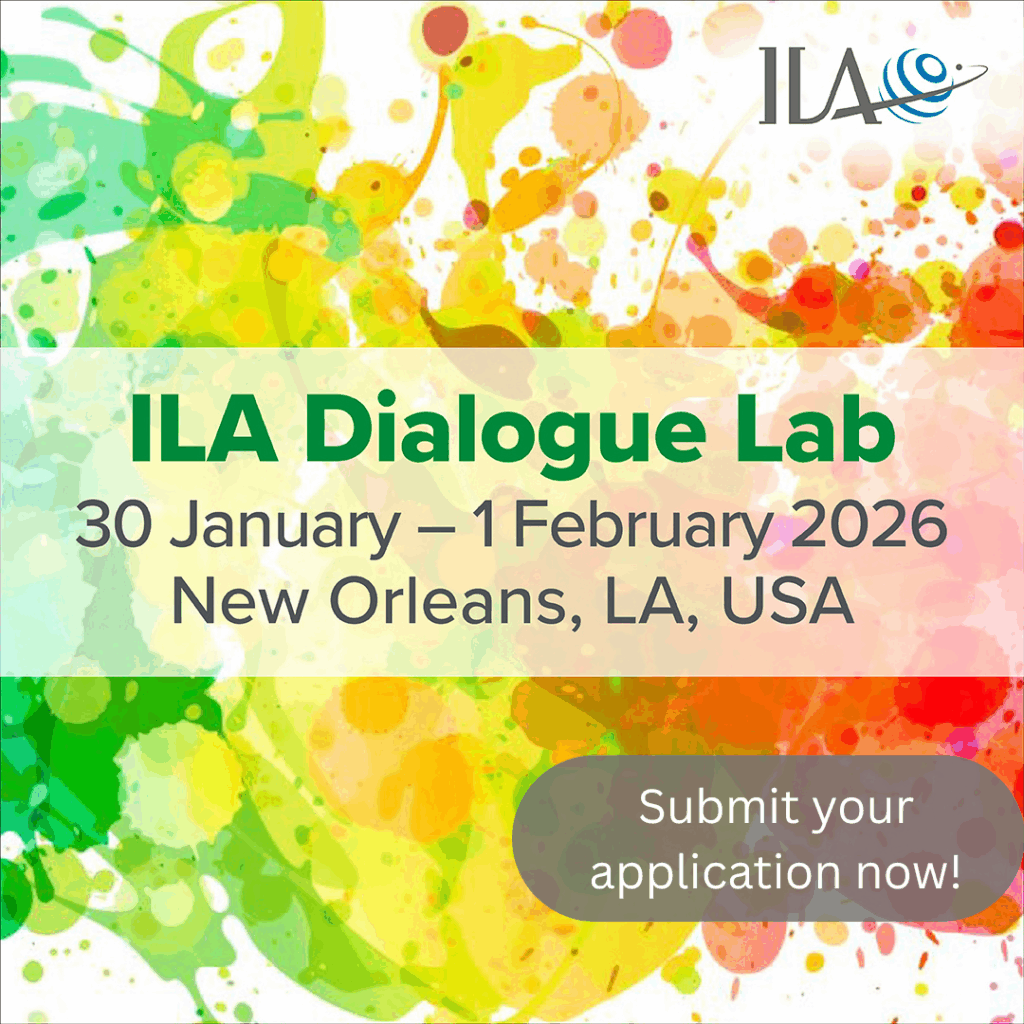
by Erwin Schwella
- 21 January 2022
Share:
The Global Risks Report 2022, 17th Edition from the World Economic Forum reveals that respondent global experts and leaders consulted on global risks are not hopeful about the outlook for the world. Less than 16% are “optimistic” or “positive.” The vast majority, 84.2% is “concerned” or “worried.”
In contrast, just 11% hold the positive view that global recovery will accelerate. Social cohesion erosion, livelihood crises, and mental health deterioration are perceived to have worsened most under the pandemic.
The dominant expectation of the experts and leaders in the report is that the next three years will be characterized by consistent volatility and multiple surprises or fractured trajectories. This will separate relative winners and losers.
For the next five years, respondents again signal societal and environmental risks as the most concerning.
Over a 10-year horizon, the health of the planet dominates concerns. Environmental risks are perceived to be the five most critical long-term threats to the world as well as the most potentially damaging to people and planet. “Climate action failure,” “extreme weather,” “biodiversity loss and ecosystem collapse,” were considered the top three global risks by severity over the next 10 years in the World Economic Forum’s annual Global Risks Perception Survey.
The Schwella leadership model is a systemic and mostly institutional leadership model. The model represents an attempt to make sense of and deal with complex societal challenges in analytical and active ways, where there is no leadership with easy answers.
The model was co-created and honed during many years of conversations with friends, students, and colleagues in classrooms, strategy and organizational development consultancy sessions, and globally for mentoring and coaching. The Leadership insights in twelve I’s, none of which, preferably, should be about me, intentionally credits all contributions.
This institutional model represents the context for the complementary twelve I’s leadership individual competency insights presented here. This combination of institutional and individual perspectives on thinking and doing integrity leadership, may assist in sense-making in a very complex world.

This model for leadership analysis and action is grounded in several C’s:
- Context, challenging leadership to be context connected and relevant;
- Challenges, requiring leadership to deal with problems with commitment and compassion;
- Concepts, as necessary conditions for valid and reliable theory-based analysis;
- Competencies as leadership knowledge, skills, and attitudes transforming ideas into implementation;
- Capacity, as institutional capacity with a culture and dynamic of enabling analysis and impactful implementation;
- Change, driving adaptive and technical change to lead and manage transitions and transformation sensitively and sensibly.
Based on these grounded C’s, are the H’s of leadership as leadership of the:
- Head, as cognitive, intellectual, analytical, and mindful, competent, strategic leadership;
- Heart, as compassionate and emotionally intelligent, learning leadership;
- Hands, as active co-creative leadership designing and delivering innovative leadership implementation for impact.
Leadership requires co-constructive R’s as:
- Roles, selected to serve the purpose, objectives, and team needs and effect implementation impact;
- Responsibilities, serving with diligence and dedication;
- Relationships, built and sustained compassionately to enhance team harmony, cohesion, and constructive unity of purpose.
Leaders must lead with the I’s of individual and institutional effectiveness and integrity. Through examples of exemplary leadership, teams do what leaders do rather than what they say.
Sensitivity and sensibility are required leadership S’s.
- Sensitive, leadership is caring and compassionate leadership, based on empathy and social and emotional intelligence;
- Sensible, leadership is data, information, knowledge, and wisdom-based leadership grounded in continuous learning.
Purpose-driven leadership leads change towards transitional and transformational T’s of leadership from challenging current realities towards desired futures.
The twelve complementary I’s, individual leadership competencies, are:
- having Insight;
- being Imaginative;
- being Intuitive;
- being Intelligent;
- being Inspirational;
- using Influence;
- driving Initiative;
- having Integrity;
- being Inclusive;
- reaching Implementation;
- effecting Impact;
- ongoing Improvement.
1. Insight requires conceptual and compassionate perspectives from leaders into leadership and real-world contexts, challenges, and actions.
These perspectives have to be relevant to the why, the what, and the how of leadership. Authentic leadership requires wider and deeper systematic and systemic insight instead of superficial, non-sustainable, quick-fix solutions.
Leadership with insight, inevitably becomes leadership with foresight.
2. Imaginative leadership is the powerful ability of, mostly, leadership of the head to create visionary images supporting desired futures from currently non-existing ideas, actions, processes, and products.
Exemplary leaders witness the impact of imaginative leadership, when stating:
- “The power of imagination created the illusion that my vision went much farther than the naked eye could actually see.” – Nelson Mandela (Thomsett & Thomsett, 2015, p. 62).
- “Imagination is more important that knowledge. Knowledge is limited. Imagination encircles the world.” – Albert Einstein (Viereck, 1929, p. 117).
- “Where there is no vision, the people perish.” – Proverbs 29:18.
3. Intuitive leaders learn to trust their instincts and tap into their internal voice using sub-consciousness intuition as the cauterizing element for intellectual and rational leadership of the head.
Intuitive leaders immerse into a deeper consciousness of more dimensions of complexity. They reflect introspectively and consult externally. Intuition provides wisdom and emotionally intelligent checks and balances for unbridled enthusiasm and disconnected naivete. Intuition should be used consistently and compassionately by leaders.
4. Intelligent leadership, as emotional intelligence (EQ) complementing fluid and crystallized intelligence (IQ), is a value-adding leadership competency.
There is little consistent evidence that IQ correlates with better leadership. Evidence suggests EQ does. Competent leadership requires a balanced set of intelligences, including IQ and EQ, for optimal impact.
5. Inspirational leadership accedes that if leaders are not inspired by their purpose and actions, probably no-one else will be.
Inspiration co-creates enthusiasm. Leadership lethargy spawns lackluster responses. Inspiration is more about hard work and dedication than charisma. Inspiration is exponentially more than mere words and cheap talk. Inspiration is imbedded into empathy and valuable, value-driven co-creation. Inspirational leadership is highly significant for leadership with impact.
6. Influence is instrumental and substantive insights and inspiration that constructively impacts on the beliefs and behaviors of leaders, teams, and those served.
Influence manifests desirably in benevolent ways and undesirably in malevolent ways. The benevolent, desirable, constructive way is through trust, legitimacy, legality, and consensus-based unity of purpose. This impacts through legitimized and legalized authority.
The undesirable way is malevolent power and force, inevitably ending in destruction and disaster.
7. Initiative in leadership is a can-do attitude connected to a distinct and deliberate bias for action.
Leaders take initiative to innovatively impact on societal problems. Initiative leadership towards impactful innovation requires mindfulness, confidence, and courageous commitment. Initiative leadership analysis and action require leadership insight as foresight and appropriate intuitive analysis. Initiative is proactive, rather than reactive, and incorporates a propensity for taking reasonable risks rather than getting stuck in lethargy and analysis paralysis.
8. Integrity leadership is the basis of trust for, in, and by leadership.
Leadership with integrity co-creates harmony and consensus based on foundations of dignity and consistency and nurtured by the fountains of honesty and credibility. Integrity demands doing what is right even when no one is watching. Integrity, and the trust co-created by integrity for purpose-driven and compassionate leadership, have moral, material, and monetary value.
Leadership lacking integrity destroys trust, creates conflict, costs money, and is wasteful in moral and material terms. Leadership without integrity inevitably leads to corruption. Corruption, in contrast to integrity, which is dignity, is deadly.
9. Inclusive leadership intentionally includes all stakeholders in the co-creation of shared vision and problem-solving implementation.
Crafting inclusive leadership involves mindsets of inclusion and inclusive techniques such as human-centered design thinking, appreciative inquiry, and learning leadership.
10. Implement is the ultimate action call for impact.
Without implementation, leadership is futile and of little consequence. Ineffective implementation confirms leadership and planning failure. Deficient implementation results from lack of insight into contextual challenges, weak conceptual understanding of the problems and opportunities, and insufficient thinking to co-create vision and solutions.
Implementation fails if plans are unrealistic, overambitious, and outstrips individual competencies and institutional organizational capacity. Implementation requires initiative through programs and projects. Without projects, there is neither implementation nor impact.
11. Impact leadership co-creates successful and significant public value outcomes based on analysis and action.
Impact follows upon imaginative insight calibrated against intuition. Impact requires inspiring, influential, emotionally intelligent leadership. Impact occurs where leaders inspire integrity-based initiatives through inclusively shared vision and implementation. Impact uses learning leadership through reflective learning for continuous improvement towards impactful implementation.
12. Improve as learning leadership intrinsically connects to analytical and reflective iterative learning rounds.
Learning leadership is grounded onto a leadership-facilitated, reflective, and analytical knowledge process informed by systematic and systemic monitoring and evaluation for continuous performance improvement.
From a knowledge-seeking perspective, answers to four questions to inform change in rounds of iterative learning are required, being:
- What happened? – answering this question provides a systematic, descriptive, qualitative, and quantitative assessment of performance and performance trends based on empirical evidence.
- Why did this happen? – answering this question delivers a diagnostic analysis, based upon provisional explanations, of which actions are related to increasing or decreasing performance.
- What can I/we learn from this? – answering this question results in improved individual learning-based competencies.
- How can this learning be built back into the system for improved systemic quality and performance? – answering this question supports discoveries that enhance prognostic institutional capacity building for continuous performance improvement.
The institutional Schwella leadership model, mostly an institutional analysis model for transformational change, can usefully be combined with 12 I’s as individual competencies. This complements the C’s to S’s of the Schwella model. And then, leadership in 12 I’s is not about me.
The combined effort may also assist in analysis and action to contemplate and craft integrity-based socially innovative responses to the complex challenges faced by the world and mitigate the impact of global and personal risks of social cohesion erosion, livelihood crises, and mental health deterioration.
References
Thomsett, M.C. & Thomsett, L.R. (2015). A Speaker’s Treasury of Quotations: Maxims, Witticisms and Quips for Speeches and Presentations. McFarland, Inc.
Viereck, G.S. (1929, October 26). What Life Means to Einstein: An Interview by George Sylvester Viereck. The Saturday Evening Post, Start Page 17.
World Economic Forum. (2022). The Global Risks Report 2022, 17th Edition. https://www3.weforum.org/docs/WEF_The_Global_Risks_Report_2022.pdf

Erwin Schwella grew up in South Africa during apartheid. He obtained a PhD in Public Governance from Stellenbosch University and became an academic there in 1981. Realizing the real consequences of apartheid, he became an academic and activist critic.
During democratization in South Africa, he served to shape the future of democratic new South African governance institutions. He is an emeritus professor of Public Leadership at Stellenbosch University in South Africa and in the Law School of Tilburg University in the Netherlands.
Since taking emeritus status from Stellenbosch, he learns about leadership as Dean: School of Social innovation and the Founding Servant Leader of the Centre for Good Governance in Africa at Hugenote Kollege in South Africa.
Erwin Schwella served as the Chair of the ILA Public Leadership Member Interest Group.

